We were thoroughly impressed with Nobuo Uematsu’s rock ‘n’ roll antics on the original LORD of VERMILION soundtrack in January 2009, so I admit I was surprised to hear that Hitoshi Sakimoto and the team at Basiscape would be handling the sequel. As it turns out, Hitoshi Sakimoto is responsible for all of the composition this time around, aided by a large list of arrangers from the Basiscape roster, who mainly handle the more rock-oriented tracks.
Another interesting note is that while the first LORD of VERMILION soundtrack was published by Dog Ear Records, LORD of VERMILION II’s soundtrack comes courtesy of Square Enix directly. Who knows what the reasons are for the change, but I was certainly curious to hear how Hitoshi Sakimoto would interpret the world of LORD of VERMILION.
Find out what to expect in our review after the jump.
While Uematsu went all out heavy metal with the original LORD of VERMILION, Sakimoto keeps with tradition while injecting his own signature orchestral sound into the mix, making for an interesting blend of styles (I was constantly reminded of the Symphony & Metallica album from 1999, which I happen to love). I mentioned that a host of Basiscape members arranged Sakimoto’s compositions, but many also lend their guitar skills throughout a number of the pieces here, so know that you’re getting live guitar on this album.
We start with “Dawn of Vermilion 2 -Opening Theme-,” Sakimoto’s arrangement of Uematsu’s opening theme for the original game. While it opens with the same wailing electric guitar notes, Sakimoto allows strings to carry the melody, lending a more regal edge to the piece. This is a nice transition for fans of the original LORD of VERMILION soundtrack, as it effectively blends Uematsu and Sakimoto’s styles. I also really dig the fact that Sakimoto decided to work this theme into numerous pieces throughout the score, bringing continuity to the album as a whole.
Next up, we take an excursion into jazz territory with “Name Entry,” featuring a funky bassline and string stabs set against an ascending electric guitar progression. There’s also a tasty piano solo accented by some jazzy brass to get that lounge vibe going. It’s quickly into the more rock-oriented material, however, as tracks like “Aguirre Atoll,” “Veteran Gallant,” and “Eternal Garden” give fans of the original LORD of VERMILION exactly what they want to hear, with the Castlevania-esque “Eternal Garden” being one of my favorite tracks on the album. The overdriven sound of “Hell Court,” which effectively conveys a blistering environment, and the impressive guitar solos in “The One at the Summit” should also please rock fans.
Other pieces, however, including “Combat Preparation,” “Ark,” and “Dracovantel” act as distinct reminders that you’re listening to Hitoshi Sakimoto’s soundtrack as they make use of his signature orchestral sound, temporarily abandoning the rock roots of the series (although guitar does peak through the bottom of the mix on a couple of these tracks). Straying even further away, “Arcania” injects a foreign sounds into the mix with its fast-moving melodic lines that hint at a dusty desert vibe while “Dragon Tomb” and “Toy Box” delve into electronic territory. “Dragon Tomb” features a tense synth bass, punchy percussion, and a chaotic brass section while “Toy Box” almost sounds like an evil circus its use of meandering bell and string notes.
The tail end of the album features the most epic tracks, starting with the heart-pounding “Eden” before moving onto the horrifying “Faux Supreme God” and the truly heavy metal “The Temple at the End of the World,” complete with rapid-fire percussion and electric guitar aplenty. The final track, “Lord of Vermilion2” is an ethereal vocal piece performed by Yasuko Otsui. Melancholy strings accompany Otsui’s indiscernible lyrics that sound mumbled and distorted, making for a really neat sound. The track ends the album on a rather peaceful note despite the intensity of everything that comes before it.
But wait, there’s a bonus track tucked away at the end of the album remixed by Manabu Namiki and performed by aRCaNa. You can forget about ending on a peaceful note with this one, as “Coin” combines Namiki’s electronic know-how with aRCaNa’s… I’m not qutie sure. Is this a rock group? The track does work in rock elements along with vocal snippets from the game, and covers a lot of territory throughout its 5-minute run time.
Overall, I have to say that while I like what Hitoshi Sakimoto and Basiscape have done with LORD of VERMILION II, I prefer the original game’s approach and production values. Not only was it a dedicated heavy metal soundtrack, but I certainly came away from it with some memorable moments. I don’t hear a lot of catchy melodies to bring me back to LORD of VERMILION II, although I do enjoy the Symphony & Metallica spirit that Basiscape has achieved. I also feel that the production quality is generally a bit muddy, as I would have preferred to a more crisp and clear sound.
At least there are a lot of pretty images to look at in the booklet. Sakimoto provides liner notes and commentary for each track, and the album cover is actually an opaque plastic sheet with a LORD of VERMILION trading card attached to the back. The album is available from both CD Japan and Play-Asia if you’re interested.
What do you think of the sound team shuffle for LORD of VERMILION 2? Do you think one approach works better than the other?
Tags: Basiscape, Hitoshi Sakimoto, Lord of Vermilion, Lord of Vermilion II, Music Reviews, Orchestral, Reviews, Rock, Square Enix





























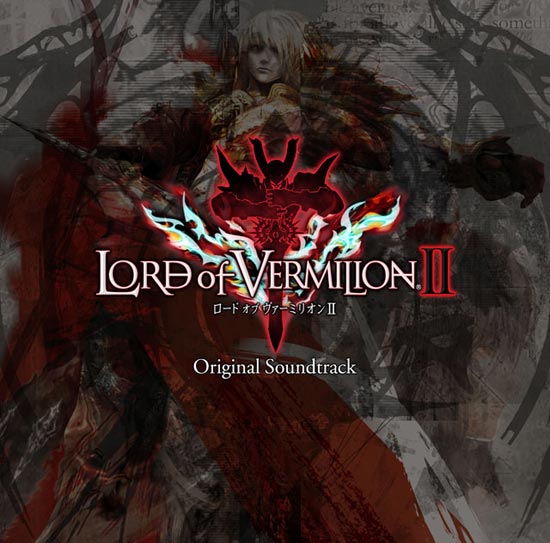
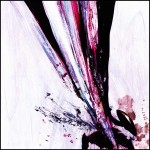
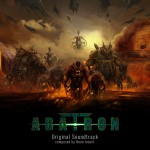
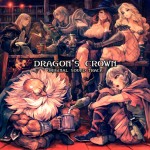
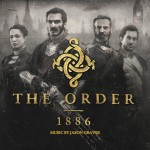







I seem to be too cynical and don’t think of this as Sakimoto’s solo work. He’s credited as the arranger for other Basiscape members’ tracks just because they borrowed his motif, and he wasn’t technically really involved in most of them.
Cedille, I think it clearly says all music composed and produced by Sakimoto. I think you’re getting at something that I often bring up with composers all the time. What is the role of an arranger? Take for example Koji Kondo or Nobuo Uematsu’s music. They’re probably creating general MIDI files and their arrangers are turning it into the rock (Uematsu’s Lord of Vermilion) or orchestral (other Uematsu scores, Kondo’s Super Mario Galaxy). That gives the arranger/orchestrator a lot of say in what the composer’s final product sounds like (which I don’t necessarily like), but from what I’ve had people say to me is, “What’s the difficult part? Coming up with a catchy melody, or creating the high-quality backing?” I don’t know. Tough debate.
Based on the liner note comments, I still suspect Sakimoto’s role on most tracks credited to Basiscape arrangers was as limited as Uematsu on “Dawn of Vermilion 2 -Opening Theme-“. You would agree Uematsu was just credited as the composer for that track just because Sakimoto borrowed the motif from the previous game.
I’m with Cedille on this one. All credit to the original composer, always, but if there’s one thing I’ve come to appreciate, it’s the evolution of one person’s music through creative arrangement by others. And there’s just no way Sakimoto would do by himself what most of these tracks do. Which is fine, because he still created the skeleton, perhaps even the body. Arrangers just play dress-ups. The creator still gets the credit for the most part.
And while you might not necessarily like the potency and influence of arrangement/orchestration, Jayson, I equally dislike the concept of ‘sound teams’ and, more recently, one ‘famous’ composer being given the credit for the work of a team (see Hans Zimmer’s ‘Modern Warfare 2’, and less extreme, FFX and XIII — by comparison, how *monotonous* was FFXII’s soundtrack?! But at least it was all Sakimoto…). So when I check vgdbm for credits upon hearing of a new cd, I’m far, far more interested in the ‘arrangers’ than the composer these days. Yukihiro Jindo is entirely responsible for that — because it was he that made Oath in Felghana so brilliant, not Ryo Yonemitsu or Mieko Ishikawa (again, all credit to them in the first place).
But about this album:
I’ve been listening to it fairly heavily for the past few days and it surprises me that you’d like this, Jayson, but be less enthusiastic about the Sekaiju no MeiQ3 arranged album, since they’re very, very similar. As they should be — they’re both this core Basiscape team at their finest. Unsurprisingly, Yoshimi Kudo’s ‘truly heavy metal’ contribution is one of my favourites — I don’t know if he can compose or not but he does magical things to existing tunes. That’s still a talent, I think.
And I definitely think this album is superior to the first game’s. Uematsu’s ‘prog rock/metal’ billed as ‘heavy metal’ irks me these days — it’s heavy rock for the most part. Maybe if your idea of heavy metal is Black Sabbath and Maiden, then okay there’s some of that, but there really are few parts of Uematsu’s Vermilion OST I can call ‘blazing’ in the same way JDK and now Basiscape (especially Kudo and Kamikura) achieve. I’d compare the original Lord of Vermilion music to Guilty Gear elements as interpreted by the Black Mages. And you just can’t call that heavy metal. Prog metal, maybe, but not heavy in the sense that most metal these days calls for double-kick bass and chunkier guitar — the violin supplanting (often terrible) vocals in symphonic metal is just a bonus most of the time.
Lord of Vermilion 2 is basically an arrange album as an OST, again much like my beloved recent Nihon Falcom soundtracks. And…who can complain about that?
Regardless of whether or not he’d do what this album does is irrelevant. He’s the composer. As much as you, me, or any other fan doesn’t like it, we’re not hearing the music of a lot of our favorite composers from the past because they’re not classically trained composers. They create synth mock-ups for the arrangers/orchestrators to flesh out.
Like you mention, look at FFXII. Look at Lost Odyssey. Super Mario Galaxy. Sakimoto, Uematsu, and Kondo. They all make heavy use of arrangers/orchestrators.
I don’t particularly like it, because I feel I don’t necessarily get to hear the raw output of the composer, but at the same time, it’s necessary to match the production values of modern games.
I agree that arrangers and orchestrators deserve a whole lot more credit for what they do, as they essentially do manage a lot of the song creation process. We’re probably never going to hear any of these guys’s “solo work” ever again.
Also, the first album didn’t hit me as “prog rock.” Definitely more metal.
…I think it is relevant if we’re considering just how much creative input Sakimoto had in the album, but that’s neither here nor there. He’s the composer, as you said, and I basically called him the ‘god’ of the project due to this fact.
You nailed it with the classically-trained composer call. Arrangement at an in-house level is a compensation and one that is finally getting the credit due — you bring up Uematsu for Lost Odyssey, but as far back as FFVII he had Hamaguchi getting his back, so to speak.
I also appreciate your lack-of-like regarding the raw input, which could be why I value the old OSTs as well, especially Koshiro’s work. But then I think of Actraiser, which was unusually grandiose for him, and I wonder if that itself didn’t have some shadow-arranger pulling it out of synth obviousness, so to speak.
I just listened to the first LoV album again — prog metal, as I said, with bits and pieces thrown in to make it a little more ‘gamey’, less monotonous and self-indulgent than some of the Mages’ work. And yes, I still love a lot of what they’ve done: ‘Those Who Fight Further,’ ‘The Extreme’ and ‘Darkness and Starlight’ are just brilliant.
Amusingly enough, the only time I ‘heard’ the original Lord of Vermilion soundtrack ‘in context’ was in Tokyo, and of course I couldn’t hear a thing over the hundreds of other games in the game center, most of which were also Lord of Vermilion. Sometimes I wonder if Squeenix were aware that this would often be the case, as opposed to the home console OST, which needs to be a lot more engaging than an arcade soundtrack.
On Symphony/Metal: LoVII didn’t really remind me of S&M at all, but that’s because a) S&M is truly its own thing and there will, for better or worse, be nothing like it again and b) S&M was very famous existing metal songs given an orchestral backing. While Kamen’s work with Metallica felt synergistic to me (he clearly knew the source material backwards), it was an interpretation of something most of us knew well if not viscerally. That isn’t the case with the LoVII OST, so I don’t try to pick apart which portions are ‘original’ and which are ‘orchestral infusions’ as one can’t help but do with S&M.
Like you said, tough debate, a lot of it stemming from the notion of what precisely defines game music production. I’ve no doubt we’ll revisit this time and again.
@Wes
I think Yoshimi Kudo is a damn fine composer. Check out Longhena Cantata, Shadowing World (both from DoDonPachi Daifukkatsu) and Presentiment (DoDonPachi Daifukkatsu Black Label). They are more electronically focused, but I think Kudo shines with his fusion of electronic/rock elements, all of those being heavily featured in the tracks above. He has composed other CAVE tracks, but I think those are his strongest.
As for the album itself, I enjoy it. I think it’s a solid production. Although evidenced by the tracks that Sakimoto solely handled, he is capable of some rock capacity, but I really think without his team of arrangers, it wouldn’t nearly have been as good.
In regards to comments about hearing composers’ original works, it does seem that the older composers (old = classic, not necessarily age related) are leaning more towards arrangers/orchestrators due to the increasing production values. Although there are some composers out there who, for the most part, rely heavily on themselves (Mitsuda), at times, even he uses the help of others. Of course, the realm of electronic music is entirely different. That’s where you gotta go if you want to hear music that is unaffected by orchestrators and or arrangers on official album productions. It’s their passion and I think most of them do it superbly!
@Don
Hey, thanks for weighing in on this one. I’ve known about Kudo’s compositions for a little while but for some odd reason I’m (probably futilely) holding my breath for Basiscape to let him out of the cage. I’ve noticed he’s usually only given one or two tracks per album. Although I’m obviously enamored with his JDK-style snMQ track, I’m equally impressed with his Deathsmiles arrangement work, which is all sorts of different. I like that — it means that I don’t like him simply because he’s a competent Sound Team JDK ‘imitator’ if you will.
I will definitely look into the DoDonPachi stuff, though. Thanks. 🙂
Hey Wes,
When you have time, feel free to send me an email (contact info can be found on SEMO). I’d love to discuss music with you via email.
Don
I’m late to this discussion, but my imagining of how it went is that Sakimoto wrote pieces like he normally does and then gave them to the other people to arrange, picking instruments and making alterations as they please, but relatively sticking to his melodic and harmonic material. I haven’t read the liners because I can’t read Japanese, but in past soundtracks he hasn’t gotten credited as composer when others quoted his theme in their otherwise original piece. Maybe in the notes he just talks about the other person’s role more than his because of innate Japanese humbleness or something. Wish I could get a translation of them because I’d like to see for myself what he said.
It’s a bit late but I would still like to join the discussion.
I think that a) the backbone of the arranged tracks (save the last one) are still Sakimoto’s creations, but b) the arrangers certainly take much liberty in the arrangements.
The evidence for a) is in the track “Eden”, near 1:00 mark. This ferocious section of harmonic progression is almost note-by-note copied from “Ragnarok” as if by copy-and-paste. I would normally notice that the music is a bit “off” if heavily arranged by others, like the Salikawood track in FFTA2, where they changed the background harmonies which makes me feel so uneasy that I just can’t listen to that particular arrangement (yes, I am a Sakimoto freak… if you don’t preserve his peculiar harmonies you are destroying his music in my opinion -.-). I don’t notice it here since they respect the source material in its entirety.
The evidence for b) is the signature neoclassical style of Kimihiro Abe in “Ark”, around 1:30 mark. (I am an Abe freak too!! ^^)